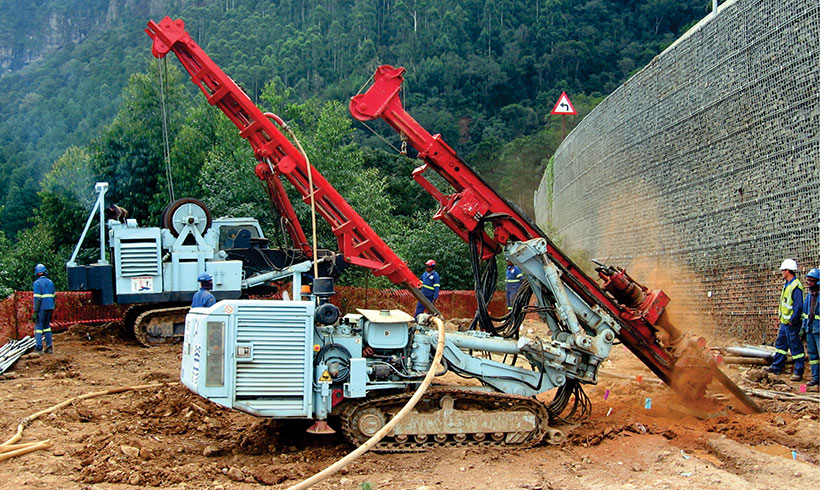Not known Factual Statements About Geotechnical Engineering For Construction Projects
Not known Factual Statements About Geotechnical Engineering For Construction Projects
Blog Article
More About Geotechnical Engineering For Construction Projects
Table of ContentsNot known Factual Statements About Geotechnical Engineering For Construction Projects Geotechnical Engineering For Construction Projects Fundamentals Explained8 Simple Techniques For Geotechnical Engineering For Construction ProjectsGeotechnical Engineering For Construction Projects for BeginnersWhat Does Geotechnical Engineering For Construction Projects Mean?Geotechnical Engineering For Construction Projects Can Be Fun For Anyone
The function of geotechnical engineering significantly deals with realizing the attributes of dirt and rock, which might differ considerably by their thickness, dampness content etc. These functions must be checked out by geotechnical engineers to forecast their motions under different circumstances. The safety along with stability of structures are affected by soil problems, making this analysis necessary., in addition to exactly how they communicate with buildings that have been put up on or within them, is one of the primary explanations for why geotechnical design is important.
Environmental security is completed with geotechnical engineering. Expertise in air, water, and soil high quality maintenance is put to utilize by geotechnical engineers to reduce the unfavorable effects of tasks.
To sum up, geotechnical engineering is an important self-control that protects the resilience and stability of civil framework. Geotechnical designers add to making structure jobs efficient all over the globe by recognizing the behaviour of planet materials and applying proper planning strategies.
Not known Details About Geotechnical Engineering For Construction Projects
By analyzing soil, rock, and subsurface problems, geotechnical engineers supply important understandings that assist in the design, building and construction, and maintenance of buildings and infrastructure.

More About Geotechnical Engineering For Construction Projects
Research laboratory screening: Establishing the residential or commercial properties of soil and rock. Area testing: Performing tests on-site to analyze problems. Evaluation and design: Utilizing information to make structures, retaining walls, tunnels, and various other frameworks. Numerous top-level construction projects have actually effectively utilized geotechnical design to ensure their security and safety and security. For circumstances:: The globe's highest structure called next page for a deep understanding of the underlying geology.

As a leader in geotechnical engineering, BECC Inc. is dedicated to providing innovative and reliable remedies that fulfill the greatest standards of high quality and safety., a mechanical designer and geologist.
The Single Strategy To Use For Geotechnical Engineering For Construction Projects
Terzaghi additionally established the framework for concepts of birthing ability of structures, and the concept for prediction of the rate of negotiation of clay layers because of consolidation. Later on, Maurice Biot fully created the three-dimensional soil loan consolidation concept, prolonging the one-dimensional design previously developed by Terzaghi to a lot more general hypotheses and introducing the set of fundamental equations of Poroelasticity.
Geotechnical designers examine and establish the homes of subsurface problems and materials.
Not known Facts About Geotechnical Engineering For Construction Projects
Geologic mapping and interpretation of geomorphology are typically completed in consultation with a geologist or engineering rock hound. Subsurface exploration generally entails in-situ screening (for example, the conventional infiltration test and cone penetration test). The digging of test pits and trenching (especially for situating mistakes and slide planes) may likewise be used to discover soil problems at depth. , which utilizes a thick-walled split spoon sampler, is the most usual way to accumulate disturbed samples.

If the interface in between Read Full Report the mass and the base of an incline has an intricate geometry, incline security analysis is challenging and mathematical remedy approaches are required. Usually, the interface's exact geometry is unidentified, and a streamlined user interface geometry is presumed. Limited inclines need three-dimensional designs to be evaluated, so most slopes are assessed presuming that they are considerably wide and can be stood for by two-dimensional versions.
Geotechnical Engineering For Construction Projects - An Overview
Developing the design based on a functioning theory of behavior anticipated under the most likely conditions. Selection of amounts to be observed as construction proceeds and calculating their anticipated values based on the functioning theory under the most unfavorable problems.
Measurement of amounts and analysis of real problems. It is inappropriate for projects whose design can not be altered during construction.
Report this page